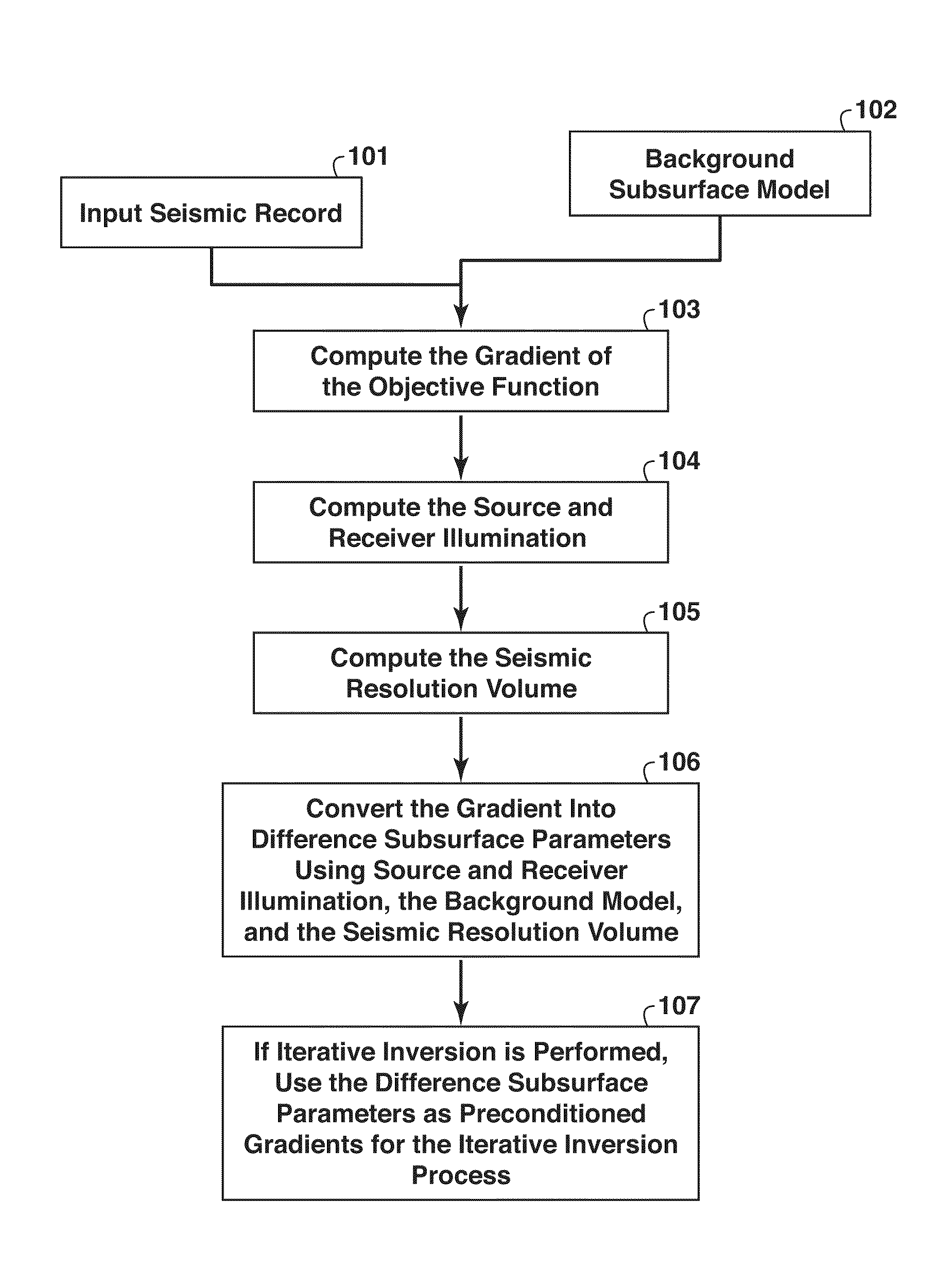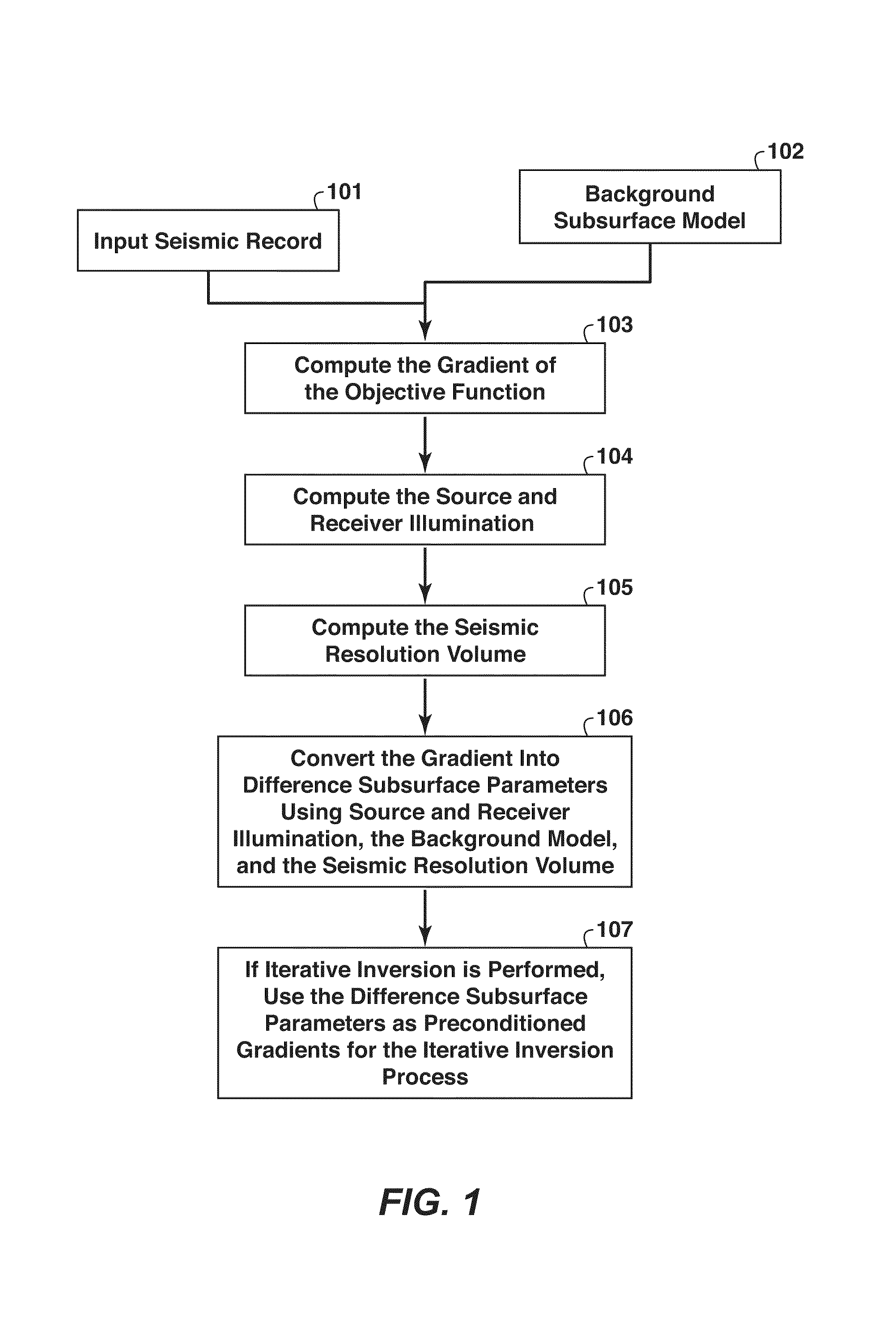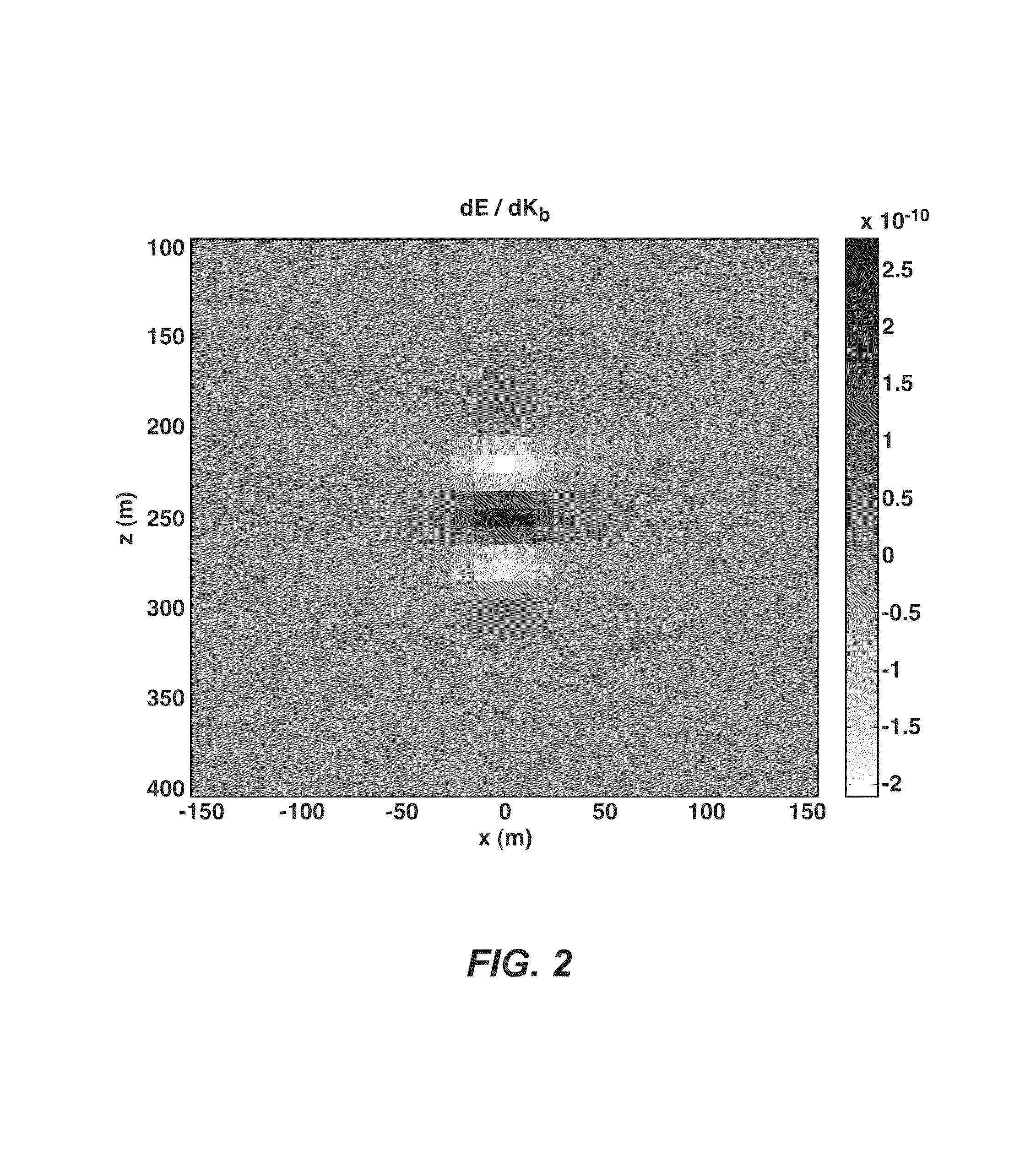Methods for subsurface parameter estimation in full wavefield inversion and reverse-time migration
a full wavefield inversion and subsurface parameter technology, applied in the field of geophysical prospecting, can solve the problems of prohibitively large storage space for a realistic, suboptimal inversion, and the convergence of the inversion process is often very slow, and achieve the effect of reducing the cost of computational resources and reducing the cost of computation
- Summary
- Abstract
- Description
- Claims
- Application Information
AI Technical Summary
Benefits of technology
Problems solved by technology
Method used
Image
Examples
examples
[0060]We consider the case of a 30 m×30 m×30 m “perfect” Born scatterer in a homogeneous medium with Kb=9 MPa and ρb=1000 kg / m3. The target is centered at (x,y,z)=(0,0,250 m), where x and y are the two horizontal coordinates and z is the depth. The target may be seen in FIGS. 2-7 as a 3×3 array of small squares located in the center of each diagram. We assume co-located sources and receivers in the −500 m≦x≦500 m and −500 m≦y≦500 m interval with the 10-m spacing in both x and y directions. We assume that the source wavelet has a uniform amplitude of 1 Pa / Hz at 1 m in the 1 to 51 Hz frequency band.
[0061]In the first example, we assume that the target has the bulk modulus perturbation given as Kd=900 kPa. FIG. 2 shows the gradient ∂E / ∂Kb(r) along the y=0 plane using Eq. 8. The scattered field pd in Eq. 8 has been computed using Eq. 5. The gradient in FIG. 2 has units of Pa m4 s, and so cannot be directly related to Kd. As described in the “Background” section above, this is a difficul...
PUM
 Login to View More
Login to View More Abstract
Description
Claims
Application Information
 Login to View More
Login to View More - R&D
- Intellectual Property
- Life Sciences
- Materials
- Tech Scout
- Unparalleled Data Quality
- Higher Quality Content
- 60% Fewer Hallucinations
Browse by: Latest US Patents, China's latest patents, Technical Efficacy Thesaurus, Application Domain, Technology Topic, Popular Technical Reports.
© 2025 PatSnap. All rights reserved.Legal|Privacy policy|Modern Slavery Act Transparency Statement|Sitemap|About US| Contact US: help@patsnap.com



